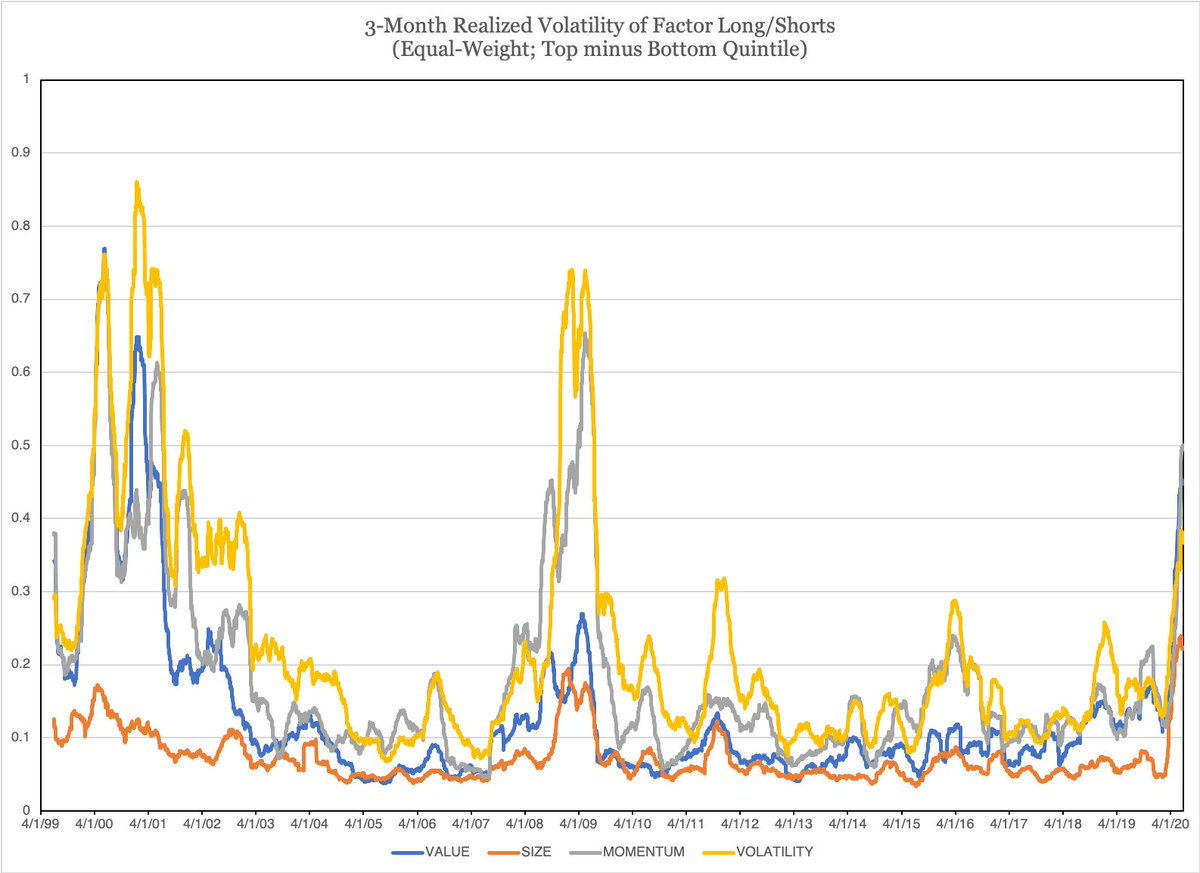
How are systematic strategies affecting equities today?
As far as I can tell, many are dead pressure at the moment.
e.g. Here’s a dashboard I whipped up of S&P 500 allocation sensitivity in one popular multi-asset momentum index.
(Definitions 👇)
As far as I can tell, many are dead pressure at the moment.
e.g. Here’s a dashboard I whipped up of S&P 500 allocation sensitivity in one popular multi-asset momentum index.
(Definitions 👇)

(Yes, I am bastardizing the greeks here)
Gamma - Change in weight per 1% move in spot price
Vanna - Change in weight per 1% move in realized vol
Charm - Change in weight per 1 day change in historical data window
Gamma - Change in weight per 1% move in spot price
Vanna - Change in weight per 1% move in realized vol
Charm - Change in weight per 1 day change in historical data window
DlambdaDvol - Change in portfolio leverage required to maintain constant volatility target per 1% change in realized volatility
Note the difference between FEB and OCT. There was so much equity exposure in FEB, changes in spot or realized volatility would lead to meaningful de-risking (not to mention just the burn from charm).
Not quite the same today.
Not quite the same today.
I’m seeing a similar pattern across CTAs, Risk Parity, etc.
That isn’t to say markets can’t go down. Just that an exogenous shock won’t lead to a lot of systematic selling pressure, as far as I measure it.
That isn’t to say markets can’t go down. Just that an exogenous shock won’t lead to a lot of systematic selling pressure, as far as I measure it.
• • •
Missing some Tweet in this thread? You can try to
force a refresh









